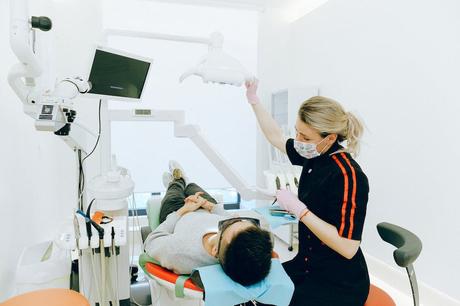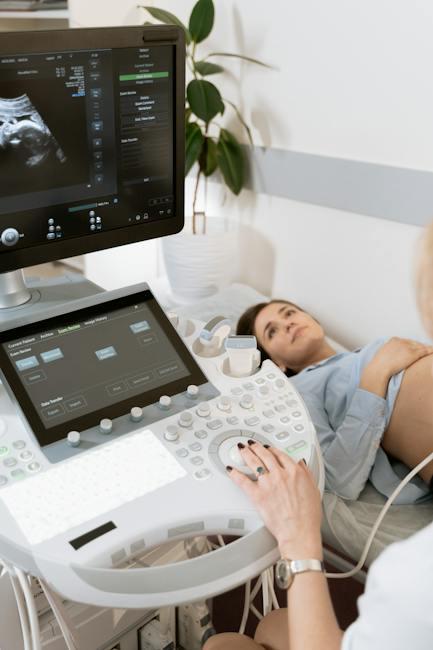In an increasingly digital healthcare landscape, patient engagement plays a crucial role in improving outcomes and overall satisfaction. One key strategy to enhance patient engagement is through workflow optimization, a process that streamlines clinical operations to ensure that patients receive timely and efficient care. By leveraging technology and data-driven insights, healthcare providers can implement strategies that not only improve patient experience but also drive better health outcomes. In this article, we will explore the significance of workflow optimization in enhancing patient engagement and how healthcare organizations can effectively implement these strategies to optimize their workflows and provide a more personalized, efficient experience for their patients.
Table of Contents
- 1. Introduction to Workflow Optimization in Healthcare Settings
- 2. Understanding the Importance of Patient Engagement
- 3. Strategies for Enhancing Workflow Efficiency in Patient Care
- 4. Leveraging Technology to Improve Patient Engagement
- 5. Implementing Workflow Optimization Tools and Practices
- 6. Measuring the Impact of Workflow Optimization on Patient Satisfaction
- Q&A
1. Introduction to Workflow Optimization in Healthcare Settings
Healthcare settings require efficient workflows to ensure optimal patient care and operational performance. Workflow optimization involves analyzing and improving the sequence of tasks and processes within a healthcare facility to streamline operations, reduce errors, and enhance productivity.
By implementing workflow optimization strategies, healthcare providers can enhance the overall patient experience, increase staff satisfaction, and improve financial outcomes. Utilizing advanced technology, data analytics, and best practices, organizations can identify bottlenecks, inefficiencies, and areas for improvement to create a more effective and sustainable workflow system.
Benefit of Workflow Optimization in Healthcare Settings:
- Enhanced patient care and safety
- Increased operational efficiency
- Improved communication between staff members
- Reduced costs and waste
- Enhanced overall performance and outcomes

2. Understanding the Importance of Patient Engagement
Effective patient engagement is crucial in healthcare as it plays a significant role in increasing patient satisfaction and improving health outcomes. When patients are actively involved in their own care and treatment plans, they are more likely to adhere to medical recommendations and achieve better results. By engaging patients in shared decision-making, healthcare providers can ensure that treatments are tailored to individual needs and preferences, leading to higher levels of patient satisfaction.
Furthermore, patient engagement can also help in preventing medical errors and reducing healthcare costs. When patients have access to their medical records, test results, and other health information, they are better equipped to participate in their own care and help identify potential issues or discrepancies. Improved communication between patients and healthcare providers can lead to early detection of problems, timely interventions, and ultimately, better health outcomes. Overall, patient engagement is key to providing high-quality, patient-centered care.
3. Strategies for Enhancing Workflow Efficiency in Patient Care
One key strategy for enhancing workflow efficiency in patient care is to implement electronic health records (EHR). By transitioning from paper-based records to electronic systems, healthcare providers can access patient information in real-time, streamline communication between different departments, reduce errors, and improve overall coordination of care. In addition, EHRs allow for automated reminders and alerts, ensuring that important tasks are not forgotten or overlooked.
Another effective strategy is to establish standardized protocols and workflows for common procedures and tasks. By creating clear, step-by-step guidelines for routine processes, healthcare providers can minimize variability in care delivery, reduce errors, and improve overall efficiency. Furthermore, utilizing technology such as barcode scanning and automated medication dispensing systems can help to streamline workflows, reduce manual errors, and improve patient safety.
4. Leveraging Technology to Improve Patient Engagement
Healthcare organizations are constantly exploring new ways to leverage technology in order to enhance patient engagement. By incorporating various digital tools and platforms, providers can offer more personalized and convenient services to their patients. Telemedicine, for example, allows for remote consultations and monitoring, making healthcare more accessible to individuals with limited mobility or living in remote areas.
Additionally, patient portals and mobile apps provide patients with easy access to their medical records, appointment scheduling, and communication with their healthcare providers. These tools empower patients to take a more active role in managing their health and staying connected with their care team. Leveraging technology in this way not only improves patient engagement but also enhances overall quality of care and patient satisfaction.
5. Implementing Workflow Optimization Tools and Practices
When , it is important to first identify the specific areas within your current workflow that can be improved. Conduct a thorough analysis of your processes to pinpoint any bottlenecks, inefficiencies, or redundant tasks. Utilize tools such as process mapping or Value Stream Mapping to visually represent your workflow and identify areas for optimization.
Once you have identified areas for improvement, consider implementing automation tools to streamline repetitive tasks and reduce manual intervention. Utilize project management software or workflow automation tools to standardize processes and ensure consistency across your organization. By leveraging technology to optimize your workflow, you can increase efficiency, reduce errors, and ultimately enhance overall productivity.
6. Measuring the Impact of Workflow Optimization on Patient Satisfaction
One key metric for is patient wait times. By streamlining processes and reducing bottlenecks, healthcare facilities can decrease the amount of time patients spend waiting to receive care. Additionally, collecting feedback from patients through surveys or interviews can provide valuable insights into how workflow changes are perceived and whether they are positively affecting the overall patient experience.
Another important factor to consider when evaluating the impact of workflow optimization on patient satisfaction is staff productivity. By optimizing workflows, healthcare facilities can help staff members work more efficiently and effectively, ultimately leading to improved patient care. Monitoring key performance indicators such as patient throughput, staff response times, and overall operational efficiency can provide a quantitative measure of the impact of workflow changes on patient satisfaction.
Q&A
Q: What is patient engagement and why is it important in healthcare?
A: Patient engagement refers to the active involvement of patients in their own healthcare decisions and treatment plans. It is important in healthcare as it has been shown to improve patient outcomes, increase patient satisfaction, and reduce healthcare costs.
Q: How can workflow optimization enhance patient engagement in healthcare settings?
A: Workflow optimization in healthcare settings can enhance patient engagement by streamlining processes, reducing wait times, and improving communication between patients and healthcare providers. This can lead to a more efficient and patient-centered care experience.
Q: What are some strategies for optimizing workflows to enhance patient engagement?
A: Some strategies for optimizing workflows to enhance patient engagement include implementing electronic health records systems, utilizing patient portals for communication and appointment scheduling, and implementing automated appointment reminders. Additionally, providing patient education materials and ensuring clear communication between patients and providers can also improve patient engagement.
Q: How can healthcare providers measure the effectiveness of workflow optimization on patient engagement?
A: Healthcare providers can measure the effectiveness of workflow optimization on patient engagement by tracking patient satisfaction scores, monitoring patient outcomes, and analyzing patient engagement metrics such as appointment attendance rates and utilization of patient portals. Conducting patient surveys and gathering feedback from patients can also provide valuable insights into the impact of workflow optimization on patient engagement.
In conclusion, optimizing workflow processes is a key strategy in enhancing patient engagement in healthcare settings. By streamlining operations, reducing bottlenecks, and improving communication, healthcare providers can create a more efficient and personalized experience for patients. Through the implementation of technology solutions and workflow redesign, organizations can not only improve patient satisfaction but also drive better health outcomes. By focusing on continuous improvement and leveraging data-driven insights, healthcare providers can truly enhance patient engagement and deliver a higher quality of care. Thank you for reading and we hope this article has provided valuable insights for optimizing your workflow to better engage with patients.
The post Enhancing Patient Engagement through Workflow Optimization first appeared on dallaswebsite.design.
